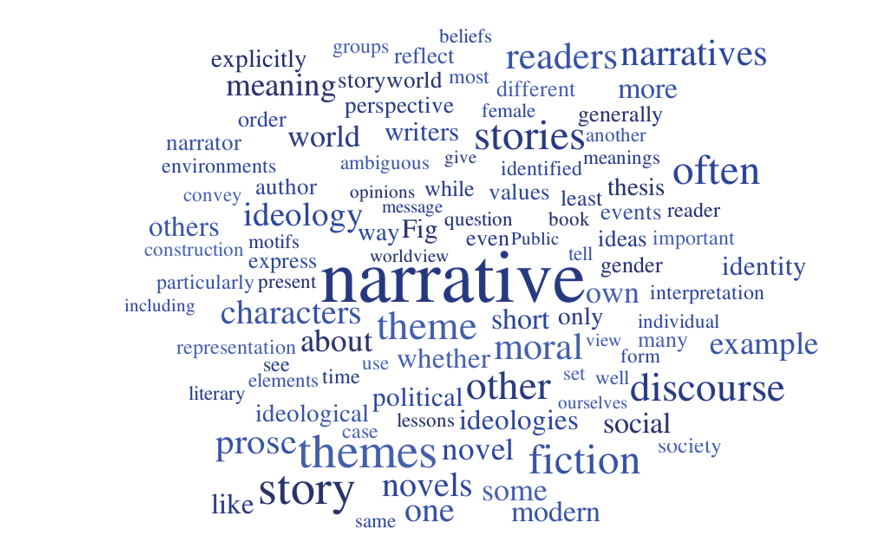
7. Theme
© Ignasi Ribó, CC BY 4.0 https://doi.org/10.11647/OBP.0187.07
In previous chapters, we have been examining in some detail how prose fiction is constructed and communicated. We have seen how stories are shaped by the arrangement of events into a plot, environments into a setting, and characters into a characterisation. We have also looked at the various ways in which narrative discourse can be articulated in order to effectively communicate stories to the reader, including the process of narration and the use of specific features of language. But we have not yet addressed what is perhaps the most crucial question any reader asks when dealing with a story: what does it mean?
At the beginning of this book, we defined narrative as the semiotic representation of a sequence of events, meaningfully connected by time and cause. But what exactly do we mean by ‘meaningful’? Are we speaking about the meaning that authors give to the narratives they write, or about the meaning that readers give to the narratives they read? And what happens when these meanings, as they often do, diverge? Should the intention of the author be the standard with which we determine the meaning of a narrative text? Or should we recognise that every reader interprets narrative texts from his or her own perspective, often generating meanings that are at least as valid as those generated by the author?
While literary theory has been asking these questions for a long time,1 here we are only interested in exploring the elements of meaning that can be identified in narrative discourse, whether they are identified by writers or readers. These elements of meaning are what we call themes. The plural reflects the fact that meanings in fiction are always multiple and changing. A theme, therefore, is simply a meaning identified by an interpreter of narrative discourse. It is important to stress that themes require some form of interpretation in order to emerge, whether it is the author, a critic, or any other reader who provides such interpretation. It is in this sense that themes connect narrative discourse, and the story conveyed by this discourse, with the lifeworld of readers and writers.
In this final chapter, we will first examine in some detail the concept of theme and we will try to locate its expression in prose fiction. Then we will discuss how narratives often explore themes relating to identity and alterity, particularly in connection with gender and ethnicity. An important notion in the analysis of meaning in narrative is ideology, which encompasses the ideas, values, and beliefs that structure a worldview. As we will see, every narrative is ideological, but ideology can be expressed in different ways in each text. This will lead us to some final considerations regarding the moral and political significance of prose fiction, particularly in the modern world. We will see that some narratives attempt to persuade readers of a moral truth, while others provide a more ambiguous or complex representation of human morality. The function of short stories and novels, as well as other literary texts, has often been the object of passionate discussions. As a conclusion to this textbook, we will consider whether writers should use prose fiction to intervene in society or confine themselves to purely artistic pursuits.
7.1 The Meaning of Narrative
When someone asks what a short story or novel is about, we tend to respond with a synopsis or summary of the plot. The only thing we do in a synopsis is to identify the key existents in the story, including events, environments, and characters, and explain them in our own words. But a synopsis is not a proper answer when someone asks what the story means. In order to respond to this question, we need to identify and give an interpretation of at least one theme in the narrative. Themes are elements of discourse, not of the story. They tell us what the story means, not for the characters in the storyworld, but for anyone who has an interpretative perspective on the story.
Themes are often identified explicitly by narrators when they tell the story and add some form of commentary, whether it is to interpret, judge, generalise, or reflect on the events, environments, and characters of the storyworld (see Chapter 5). While the interpreter in this case is part of narrative discourse, the theme is usually also relevant for the actual readers, who might agree or disagree with the framing of the theme provided by the narrator. In many short stories and novels, especially those with an omniscient narrative voice, the themes explicitly identified by the narrator reflect themes that the author has intentionally introduced into the narrative and to which she is often quite attached. For example, the omniscient narrator of Harriet Beecher Stowe’s Uncle Tom’s Cabin clearly identifies the immorality of slavery as a key theme in the narrative (Fig. 7.1). This conviction is very much at the heart of the author’s intention when writing the book, and it has been shared by many of its readers throughout the years.
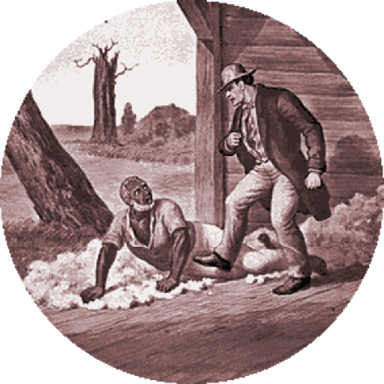
Fig. 7.1 Harriet Beecher Stowe, Uncle Tom’s Cabin (Boston: John P. Jewett, 1852), Internet Archive Book Images, Public Domain, https://commons.wikimedia.org/wiki/File:Uncle_Tom%27s_cabin_-_or,_life_among_the_lowly_(1852)_(14586176090).jpg
In many other stories, however, the themes are not explicitly identified. This might be because the narrator refrains from making explicit commentary about the story, for instance when narration is conveyed by an objective narrative voice. One theme in Ernest Hemingway’s short story ‘Hills Like White Elephants,’ for example, seems to be the moral ambiguity of abortion. But this theme is never expressed as such by the narrator, who merely conveys the words and gestures of the couple having a conversation in a forsaken train station, leaving readers to come up with their own interpretations of what it all means.
Similarly, when the narrator is inwardly focalised and has limited knowledge or perspective about the storyworld, his opinions or comments might not reflect the actual themes of the narrative. This is generally the case with unreliable narrators, who are not fully aware of the meaning of the story they are telling. The story of Harper Lee’s To Kill a Mockingbird, for example, is narrated from the perspective of Scout, a six-year-old girl, who does not understand the meaning of the tragic events she is experiencing. Like Uncle Tom’s Cabin, one key theme of the book seems to be the immorality of racial inequality. But since the girl is not able to frame or express it, at least not in those terms, this theme can only emerge from the interpretation of readers.
Regarding theme, internal narrators are in a similar position to other characters in the storyworld, the only difference being that at least they know that they are telling a story. Non-narrating characters only exist in the storyworld and take part in the story being told, but they are generally not aware of the story as a story. Thus, unlike the narrator, they are not able to add commentary or give an interpretation of the meaning of events, environments, and characters at the level of narrative discourse. In many cases, however, characters express aspects of theme, in the form of subjective or general reflections about crucial elements of meaning in the story. This is most common in so-called philosophical novels, which often include long dialogues or monologues where characters develop ideas or opinions that connect with the themes of the story. This is the case in Fyodor Dostoyevsky’s The Brothers Karamazov, for example, where the brothers Ivan and Alyosha engage in a passionate discussion about God and morality, which reveals many of the themes in the novel. And yet, it is only when an external interpreter links these statements with the overall structure of the story that themes begin to emerge.
Finally, themes should not be confused with motifs. If themes are elements of meaning in narrative discourse, motifs are existents that recur throughout the story and often acquire a symbolic significance. For example, in F. Scott Fitzgerald’s novel The Great Gatsby, the green light that shines at the end of the bay across from Gatsby’s mansion is a motif that seems to represent or symbolise his hopes and expectations for the future, and more generally the American dream. Insofar as motifs are usually symbolic, their meaning tends to relate to narrative theme. This is the reason why motifs are sometimes called ‘minimal thematic units.’2 A key theme in The Great Gatsby is the decadence and unreality of the American dream; and motifs like the green light serve to reinforce and highlight this theme throughout the narrative.
7.2 Identity
As mentioned at the beginning of this book, narrative is the fundamental way by which we humans make sense of ourselves and our world. Our own identity is little more than a narrative, a story that we tell ourselves and others about who we are, where we come from, and where we are going. But our identity is also constructed by others, as they tell stories about us and place us in the context of social narratives over which we generally have little control or influence. The complex dynamic of identity and alterity, how we construct ourselves, but also how we construct others and how we are constructed by them, is therefore an essential aspect of narrative in all its forms.
In modern times, prose fiction has become a privileged vehicle for the construction of individual and collective identities, as well as for the construction of the different others that sustain and demarcate social identification. Only through narrative fiction can we share (or think we share) the subjective experience of another individual, access his or her thoughts, and participate from within in his or her life decisions. This illusion created by fiction is a powerful way to reinforce identification with a given in-group, as well as to approach and try to understand out-groups. But the same illusion can also contribute to distance readers from out-groups that are portrayed in ways that reinforce social stereotypes and negative biases.3 A crucial theme in many short stories and novels is precisely the social process of defining oneself and others, particularly in relation to two important dimensions of subjectivity: gender and ethnicity.
Gender refers to the set of characteristics that differentiate males and females. Beyond objective characterisations of gender, however, human beings develop their own gender identity based on subjective and social factors. These same factors are often reflected in the themes of short stories and novels, particularly in the depiction of male and female characters and the different roles or psychological traits that narrative discourse assigns to them. As most stories have been written by men, generally from an androcentric perspective, they have tended to cast women in subordinate or dependent roles, often presenting them as ambivalent objects of male desire and repulsion.4 This construction of the female other in narratives mostly written by males can be seen, for example, in William Thackeray’s novel Vanity Fair, where women are characterised as either angelic creatures like Emmy Sedley or as dangerous temptresses like Becky Sharp, a dualistic and imaginary representation of femininity that serves to support patriarchal values and discourses.
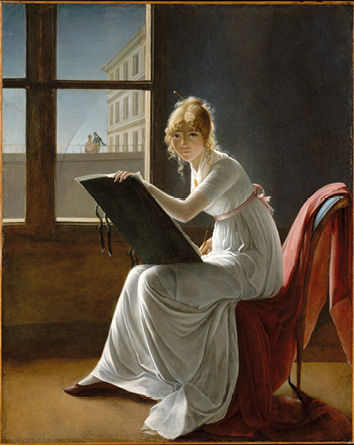
Fig. 7.2 ‘Young Woman Drawing’ (1801), oil on canvas by Marie-Denise Villers depicting an independent feminine spirit (possibly a self-portrait), Public Domain, https://commons.wikimedia.org/wiki/File:Villers_Young_Woman_Drawing.jpg
Before the twentieth century, only a few female writers, such as Charlotte Brontë or George Eliot, had the courage or the opportunity to break social restrictions and conventions in order to produce short stories and novels that represented female subjectivity and agency in their own right, even if they often had to do so by complying with the dominant worldviews of a patriarchal society (see Fig. 7.2). It is only with the development of identity politics that women, as well as other minority groups such as LGBT people, have been able to use prose fiction to openly explore themes of gender identity and sexuality, or simply to speak with their own creative voice about themes that had traditionally been the sole prerogative of heterosexual men. A novel like Doris Lessing’s The Golden Notebook, for example, mixes personal, professional, literary, political, and feminist themes into a fragmentary narrative that aims to replicate the fragmentation of female consciousness amid social and individual struggles.
Ethnicity is another important theme in modern narrative, as numerous short stories and novels have attempted to reflect on the dynamics of power, oppression, and resistance in the context of colonialism and other interethnic dynamics. We should not forget that prose fiction, at least in its modern form, originates to a large extent in European culture at precisely the same time as Europeans were beginning a worldwide expansion that allowed them to achieve economic, military, and cultural hegemony at the expense of other peoples. Revealing an entrenched ethnocentrism, the European narratives of this period often portray these ‘others’ as inferior, docile, or underdeveloped, sustaining in more or less explicit terms the colonial project of Western powers.5 One example of this kind of legitimation can be found in Gustave Flaubert’s novel Salammbô, whose themes of oriental sensuality, exoticism, and corruption reflect and strengthen a stereotypical and objectifying view of Middle-Eastern and non-European others.
As the process of decolonisation gave way to a postcolonial and globalised world, previously colonised and other non-Western peoples have been struggling to recover their own identity and sense of agency (see Fig. 7.3). And they have often done so by writing stories where they represent themselves as subjects, telling stories with themes that are relevant and meaningful for them, and expressing those themes from their own individual and collective perspective. This is the case, for example, in Chinua Achebe’s Things Fall Apart, a novel dealing with the destructive consequences of Western colonialism in Africa from the point of view of the colonised.
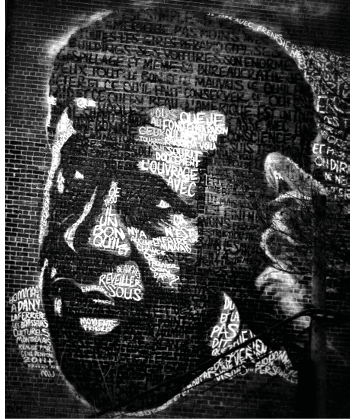
Fig. 7.3 Mural of Frantz Fanon, author of The Wretched of the Earth, Public Domain, https://www.flickr.com/photos/montrealprotest/19582249739
7.3 Ideology
We call ideology the interconnected set of beliefs, ideas, values, and norms that structure the worldview of a person or group. Ideology is generally invisible, especially for the individuals or groups whose views and opinions are largely defined by it. For example, a devout Christian or Buddhist will probably not identify his beliefs as constituting an ideological view of the world, but rather the way things actually are. But all of us are, in one way or another, subject to different ideological positions, whether we adhere to rationalism, liberalism, communism, or other structured systems of thought and value. These ideologies influence to a large extent the meanings we ascribe to ourselves and to everything else in our lifeworld, including other people.
Narrative discourse is particularly effective at communicating ideological views without necessarily stating or even recognising them. If a narrative manages to convince readers that its storyworld is a verisimilar representation of their own lifeworld, the ideology that structures its discourse is likely to be tacitly accepted as a valid and credible one. This is why narratives are often used, consciously or not, to sustain the ideologies of certain social groups, usually those that have more power, or at least the capacity to produce and propagate their discourses more effectively throughout society.6 At the same time, however, narratives are also used, again, consciously or not, by other groups with less power in society, as they attempt to resist dominant ideologies and express their own set of values and beliefs.
Prose fiction has been, and continues to be, an important vehicle for conveying or contesting ideology, whether explicitly or implicitly. In fact, there is no fiction narrative whose discourse does not express in one way or another at least one ideological position, just as there is no individual or collective opinion that is not ideological. There are four different ways in which ideology can be represented in the narrative discourse of short stories and novels:
- Concealed: Prose fiction can embrace an ideology implicitly, without recognising it as an ideological commitment. Yet, ideology often impregnates the representation of the storyworld (events, environments, characters) or narrative discourse (narration, language, theme). For example, in Ian Fleming’s Casino Royale and other novels about the secret agent James Bond, everything denotes the masculine, imperialistic, and capitalistic worldview of British elites after the Second World War, from the sports cars Bond drives to the enemies he fights against, the women he seduces, or the language he speaks.
- Committed: Prose fiction can also embrace an ideology explicitly, while trying to convince readers of the truthfulness of its tenets. Socialist realist novels, such as Maxim Gorky’s The Mother, openly advocate the ideals and values of socialism, by portraying the working class as a heroic agent of political, cultural, and economic transformation towards a better society, against the opposition of self-interested groups like the capitalists or the aristocracy.
- Critical: Prose fiction is sometimes critical of dominant ideologies, without necessarily embracing or committing to an alternative ideology. George Orwell’s 1984 (Fig. 7.4), for example, offers a bleak representation of a totalitarian society in a dystopian future, as a way to criticise both the capitalist and socialist ideologies that were struggling for world dominance at the time of the Cold War.
- Ambiguous: Some prose fiction stories present a more ambivalent or ambiguous view of alternative ideological positions. For instance, ideologies can be advocated or symbolised by different characters, as in Thomas Mann’s novel The Magic Mountain, where the liberal, humanistic, religious, conservative, hedonistic, and nihilistic ideologies prevalent in Europe around the First World War are conveyed through the actions and opinions of various characters in the story. Ideologies can also be represented directly by the events, environments, and characters of an alternative storyworld, as in Ursula K. Le Guin’s science-fiction novel The Dispossessed, where two different planets, one based on hierarchical capitalism, the other one on authoritarian communism, cooperate and compete with each other in a fictional universe.
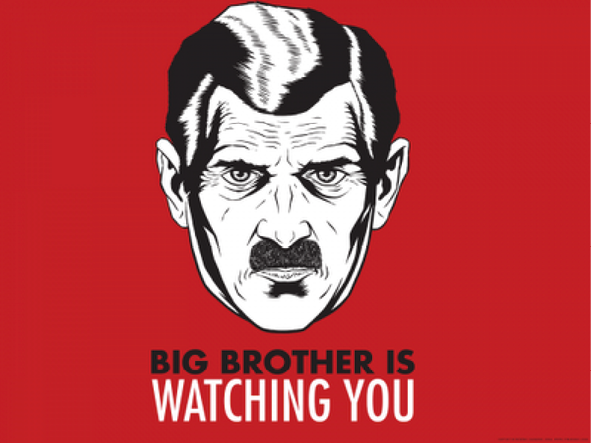
Fig. 7.4 Poster depicting Big Brother’s slogan from George Orwell’s dystopian novel 1984. By Frederic Guimont, Free Art Licence, https://commons.wikimedia.org/wiki/File:Cropped-big-brother-is-watching-1984.png
7.4 Morality
Some fictional stories try to convey an unambiguous moral message or lesson. We call this message the moral or thesis of the narrative. If there is a thesis, it is always one of the most relevant themes in the narrative. But there might be other themes besides the thesis that the narrative touches upon. The thesis is an aspect of narrative discourse, not of the story. It is an idea, theory, or lesson that the implied author is trying to persuade the implied reader to accept.
A thesis or moral can be explicitly stated in the narrative, but it can also be left implicit. Traditional narrative genres like the fable or parable often have morals, even if these morals are not always explicit. Fables present supernatural characters, often nonhuman animals who act like humans, in order to convey a moral lesson, while parables present ambiguous or puzzling situations and dilemmas in order to provide the lesson in a more roundabout way. These genres were popular in the past, when it was often assumed that literature’s main function was to educate readers and provide them with some sort of moral guidance. To a certain extent, this is still the case in modern literature, but the kinds of lessons that narrative and other forms of literary discourse provide today tend to be more ambivalent and controversial.
Novels that have a clear didactic purpose and expound a moral or philosophical message are sometimes called ‘thesis novels’ (from the French, ‘roman à thèse’). An example of this kind of novel is Voltaire’s Candide, which tells in a sarcastic tone the story of a young man whose optimistic worldview is repeatedly shaken by the hardships and disasters of the real world.
In general, however, moral lessons in modern prose fiction tend not to constitute the whole theme of the narrative, as in thesis novels. To be sure, there are still modern fictions that explicitly and unambiguously present a moral thesis, especially in children’s or popular genres, as in the Harry Potter series. But for the most part, literature is no longer tasked with the education of readers. Rather, it is expected that it will present them with moral or existential alternatives that reflect the complexities and uncertainties of life. Moral lessons, therefore, are often mixed with other themes and ideas, which may even contradict or undermine moral certitude. In Robert Louis Stevenson’s novel The Strange Case of Dr Jekyll and Mr Hyde, for example, the moral dualism that drives the plot and constitutes the main theme of the narrative is undercut by the realisation that good and evil cannot be easily distinguished from one another, much less decanted as if they were separate essences. In fact, as modern narratives often imply, morality is more a matter of perspective and interpretation, rather than a set of absolute principles or rules that people should follow.
One important consequence of this moral relativism is the modern view that short stories and novels should not refrain from showing what is ugly, unpleasant, improper, or revolting about life and human nature. As one of the characters in Oscar Wilde’s The Portrait of Dorian Gray says, ‘the books that the world calls immoral are books that show the world its own shame’ (see Fig. 7.5).7
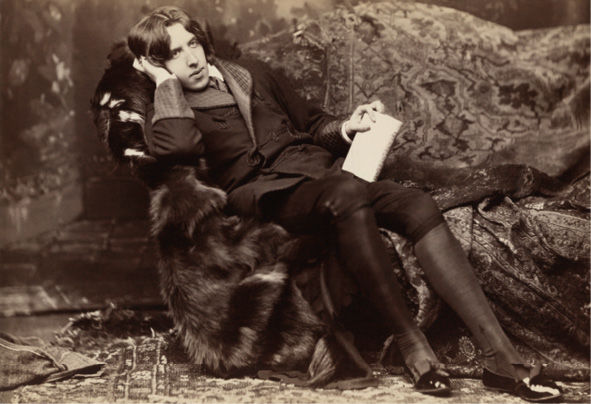
Fig. 7.5 Oscar Wilde (1884), photographic print on card mount: albume. By Napoleon Sarony, Public Domain, https://commons.wikimedia.org/wiki/File:A_Wilde_time_3.jpg
7.5 Art and Politics
A question that has often stirred controversy amongst writers and readers is whether literary narratives should be used as instruments to achieve political and social ends. As we have seen, the idea that narratives, including short stories and novels, have a didactic function is not a modern one. Narratives have traditionally been used to convey moral lessons and worldviews that tended to reflect the ideologies of writers and the societies in which they lived. Even when these ideologies were concealed, instead of being explicitly stated in narrative discourse, they still exercised an influence on readers and had therefore an impact on social and political developments.
Dominant ideologies, when presented as convincing narrative fictions, can make partial worldviews held by specific social groups seem natural and common-sensical. In the past, institutions like slavery, colonialism, or patriarchy, which today are generally considered oppressive and unacceptable, were held as incontrovertible by most reasonable and well-educated people. And narratives reflected those values and ideas, as well as its contestations, in the same way that today’s narratives might reflect the values and ideas associated with capitalism, democracy, socialism, multiculturalism, or other ideological positions that occupy current political debates.
What should writers do in relation to these ideas and controversies? Should they use their narratives to intervene in political argument, even to the point of providing a platform to propagate a certain ideology and persuade readers to embrace it? Or should they refrain from taking a political stance and from trying to convert readers to their cause, while concentrating instead on perfecting their art and writing self-sufficient prose fictions?
Both positions have been defended in modern times by writers and critics who were concerned about this question. For some, like the philosopher Jean-Paul Sartre, author of the novel Nausea, writers cannot isolate themselves from reality and have the responsibility to use narratives to express their political commitment in the face of the various forms of exploitation and injustice found in the world. For others, however, a writer should not be bound to any ideology or asked to become the preacher for any cause, no matter how noble or justified it might be. This position is exemplified by Stephen Dedalus, James Joyce’s fictional alter ego in his novel A Portrait of the Artist as a Young Man, for whom the writer should aim ‘to discover the mode of life or of art whereby the spirit can express itself in unfettered freedom.’8
At a time when many prose fiction writers are perhaps less motivated by a personal commitment to bring about change in society or by the aspiration to attain beauty or artistic perfection, and rather by the more prosaic goals of entertainment, it might seem idle to ask these questions. But even when authors are not aware of their own motivations or responsibilities, their stories, recreated at every reading by the imagination of countless readers, continue nonetheless to have an impact in the world. Whether prose fiction can contribute to make the world a better place in which to live, helping us to sustain its injustices and immoralities, is still an open question. And perhaps it is one that will remain unanswered as long as we need to tell stories in order to better understand each other.
Summary
- Themes are meanings identifiable in narrative discourse by anyone who has an interpretive perspective on the story, whether it is the narrator, the author, or the reader.
- Many themes in modern prose fiction deal with the dynamics and conflicts of identity (the construction of the self) and alterity (the construction of others), particularly in relation to gender and ethnicity.
- All narratives express some form of ideology — a structured set of values, ideas, and beliefs — whether discourse conceals it, commits explicitly to further it, criticises it, or represents it in ambiguous terms.
- Some short stories and novels convey an explicit moral message, or thesis, and attempt to convince readers to accept it, while others might convey more implicit or ambivalent moral lessons.
- It is a matter of some controversy whether prose fiction should contribute to promote social and political ends, or, on the contrary, should be regarded as a purely artistic endeavour, free from external aims.
References
Adichie, Chimamanda N., ‘The Danger of a Single Story’ (TED Global, July 2009), https://www.ted.com/talks/chimamanda_adichie_the_danger_of_a_single_story
Culler, Jonathan D., Literary Theory: A Very Short Introduction (Oxford, UK: Oxford University Press, 2011).
Eagleton, Terry, Ideology: An Introduction (London, UK: Verso, 1991).
Eagleton, Terry, Literary Theory: An Introduction (Minneapolis, MN: University of Minnesota Press, 2008).
Gilbert, Sandra M., and Susan Gubar, The Madwoman in the Attic: The Woman Writer and the Nineteenth-Century Literary Imagination (New Haven, CT: Yale University Press, 2000).
Joyce, James, A Portrait of the Artist as a Young Man (Oxford, UK: Oxford University Press, 2000).
Prince, Gerald, A Dictionary of Narratology (Lincoln, NE: University of Nebraska Press, 2003).
Said, Edward W., Orientalism (New York, NY: Vintage Books, 1979).
Wilde, Oscar, The Picture of Dorian Gray, ed. by Robert Mighall (London, UK: Penguin, 2003).
1 For an introduction to these and other debates in literary theory, see Terry Eagleton, Literary Theory: An Introduction (Minneapolis, MN: University of Minnesota Press, 2008); Jonathan D. Culler, Literary Theory: A Very Short Introduction (Oxford, UK: Oxford University Press, 2011).
2 Gerald Prince, A Dictionary of Narratology (Lincoln , NE: University of Nebraska Press, 2003), p. 97.
3 On this point, see Chimamanda Ngozi Adichie, ‘The Danger of a Single Story’ (TED Global, July 2009), https://www.ted.com/talks/chimamanda_adichie_the_danger_of_a_single_story
4 Sandra M. Gilbert and Susan Gubar, The Madwoman in the Attic: The Woman Writer and the Nineteenth-Century Literary Imagination (New Haven, CT: Yale University Press, 2000).
5 Edward W. Said, Orientalism (New York, NY: Vintage Books, 1979).
6 See Terry Eagleton, Ideology: An Introduction (London, UK: Verso, 1991).
7 Oscar Wilde, The Picture of Dorian Gray, ed. by Robert Mighall (London, UK: Penguin, 2003), p. 208.
8 James Joyce, A Portrait of the Artist as a Young Man (Oxford: Oxford University Press, 2000), p. 207.

